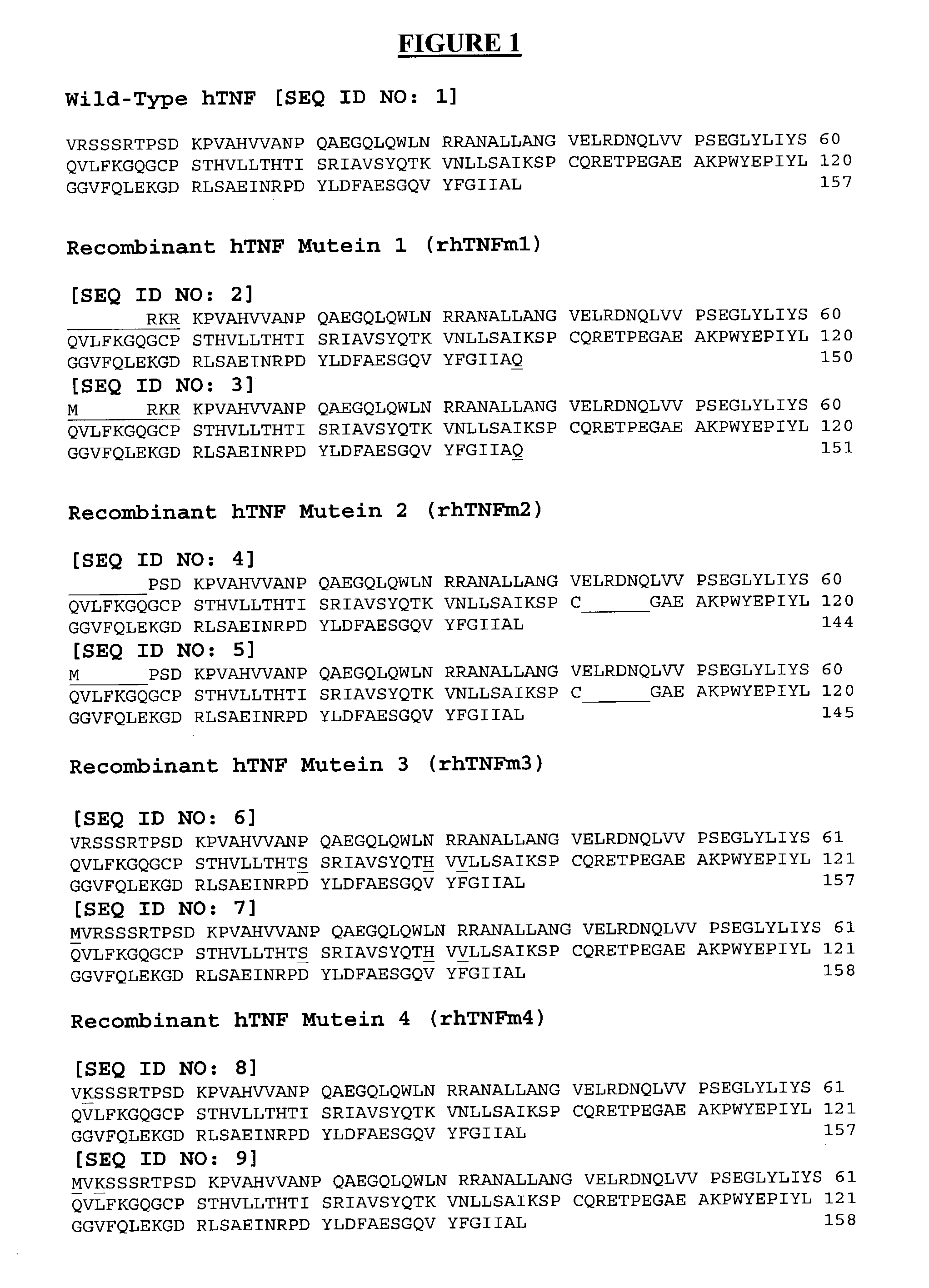Therapeutic use of tumor necrosis factor-alpha mutein
a tumor necrosis factor and alpha mutein technology, which is applied in the field of tumor necrosis factor alpha mutein therapy, can solve the problems of cell cycle arrest and/or cell death, interfere with cell growth, and common to all alkylating agents,
- Summary
- Abstract
- Description
- Claims
- Application Information
AI Technical Summary
Benefits of technology
Problems solved by technology
Method used
Image
Examples
Embodiment Construction
[0163] 1. Expression and Purification of rhTNFm1
[0164] Recombinant human TNF-.alpha. mutant 1 (rhTNFm1, FIG. 1) was expressed in E. coli and purified by using techniques known in the art. Briefly, E. coli strain HMS174 containing a plasmid encoding rhTNFm1 was inoculated in LB (Amp) and cultured at 30.degree. C. until OD.sub.600 reached about 0.4. The LB culture was transferred to fermentation containers containing TH fermentation medium at 1% concentration, and cultured at cultured at 30.degree. C. until OD.sub.600 reached about 0.4. The pH value was maintained at 6.8-7.0 and the concentration of oxygen in the solution at 30% during the fermentation.
[0165] After the fermentation, bacterial cells were collected by centrifugation and lysed ultrasonically in cold TSE buffer (0.1 M Tris, 0.2 M NaCI, and 0.05 M EDTA at pH 7.2). The lysate was centrifuged; and the supernatant was collected. Solid ammonium sulphate was added to the supernatant to precipitate the protein by salt gradient. ...
PUM
| Property | Measurement | Unit |
|---|---|---|
| median survival time | aaaaa | aaaaa |
| pH | aaaaa | aaaaa |
| molecular structure | aaaaa | aaaaa |
Abstract
Description
Claims
Application Information
 Login to View More
Login to View More - R&D
- Intellectual Property
- Life Sciences
- Materials
- Tech Scout
- Unparalleled Data Quality
- Higher Quality Content
- 60% Fewer Hallucinations
Browse by: Latest US Patents, China's latest patents, Technical Efficacy Thesaurus, Application Domain, Technology Topic, Popular Technical Reports.
© 2025 PatSnap. All rights reserved.Legal|Privacy policy|Modern Slavery Act Transparency Statement|Sitemap|About US| Contact US: help@patsnap.com


